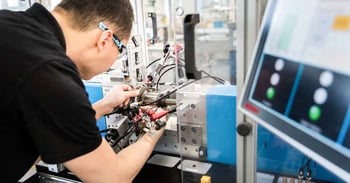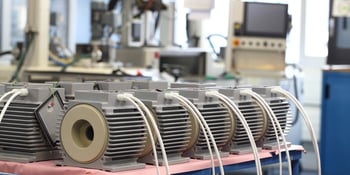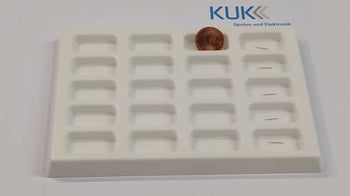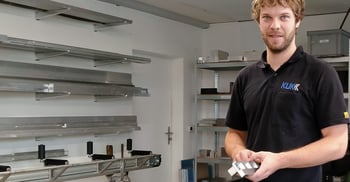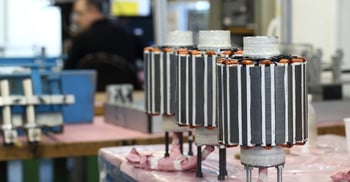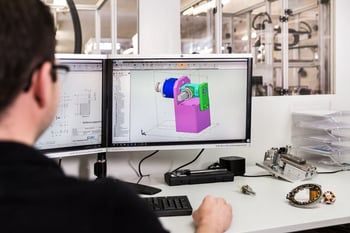Benefits of 3D printing in electric coil prototyping
Coil prototyping has come a long way since its inception, and 3D printing technology has played a significant role in its evolution. The benefits of using 3D printing in coil prototyping are numerous, from faster prototyping to increased design flexibility. This technology has also paved the way for the development of new materials and applications in various industries, such as automotive and medical. In this blog, we will delve into the different types of 3D printing technologies used in electric coil prototyping, the materials used, and the common applications. We will also explore what the future holds for 3D printing in coil prototyping, from the increased adoption of low-cost 3D printers to advancements in material science.
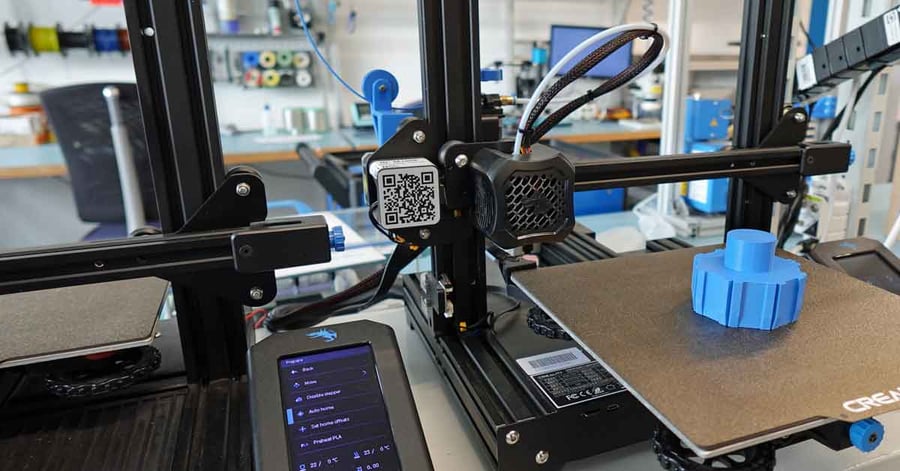
The advantages of using 3D printing technology in coil prototyping are numerous and continue to evolve. Faster prototyping, increased design flexibility, and reduced costs are just a few of the benefits. With 3D printing, designers can create multiple iterations of a product in a matter of days, reducing lead times and accelerating the product development process. Moreover, 3D printing allows for greater design flexibility and customization of products, which can improve performance and quality. As 3D printing technology continues to evolve, we can expect even more benefits to emerge, making it an essential tool for product engineers alike in the automotive, medical & sensors and industrial automation sector.
Moreover, the use of 3D printing can significantly reduce costs associated with traditional prototyping methods. With 3D printing, designers can create multiple iterations of a product at a fraction of the cost of traditional methods. This is particularly useful for small to medium-sized businesses that lack the resources of significant tooling investments.
In summary, 3D printing at electric coil prototyping phase offers numerous advantages, including faster prototyping, increased design flexibility, and reduced costs.
Faster prototyping
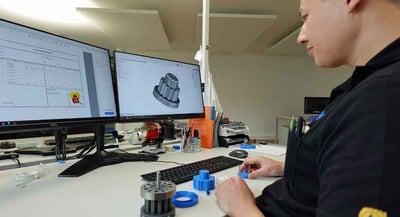 Faster prototyping is one of the most significant advantages of using 3D printing technology in coil prototyping. With traditional prototyping methods, lead times could take weeks or even months, and the cost could be prohibitively high. However, with 3D printing, designers can create multiple iterations of a product in a matter of days, reducing lead times and accelerating the product development process. This not only saves time but also reduces costs associated with traditional methods. Additionally, because 3D printing allows for easy modifications and adjustments to designs, designers can quickly identify and correct errors and design flaws, further reducing lead times and costs.
Faster prototyping is one of the most significant advantages of using 3D printing technology in coil prototyping. With traditional prototyping methods, lead times could take weeks or even months, and the cost could be prohibitively high. However, with 3D printing, designers can create multiple iterations of a product in a matter of days, reducing lead times and accelerating the product development process. This not only saves time but also reduces costs associated with traditional methods. Additionally, because 3D printing allows for easy modifications and adjustments to designs, designers can quickly identify and correct errors and design flaws, further reducing lead times and costs.
Increased design flexibility
3D printing allows for greater customization of products, which can improve performance and quality. This is particularly important in industries such as medical and automotive, where customized products can mean the difference between life and death, or between a successful product and one that falls short. As 3D printing technology continues to evolve, the possibilities for design flexibility and customization options are becoming even more exciting. With advancements in software and hardware, engineers of inductive components will have access to more sophisticated tools and materials that will enable them to create even more complex and intricate designs. Moreover, 3D printing technology will continue to expand into new industries, such as aerospace and architecture, which will require even more sophisticated and customized designs.
Types of 3D printing technologies used in coil prototyping
In electric coil prototyping, various 3D printing technologies are employed to achieve different results. Fused Deposition Modeling (FDM) and Stereolithography (SLA) are two popular techniques used in the industry. FDM is an affordable option that involves the extrusion of a thermoplastic material layer by layer to create a 3D object. On the other hand, SLA uses a liquid resin cured by a laser to produce objects with a smooth surface finish. Additionally, Digital Light Processing (DLP) is another 3D printing technology that is gaining popularity due to its high accuracy and speed.
Fused Deposition Modeling (FDM)
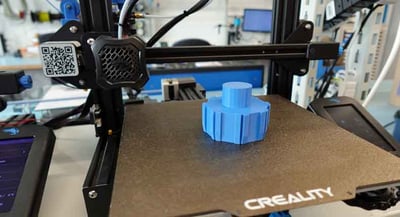 Fused Deposition Modeling (FDM) is one of the most common 3D printing techniques used in coil prototyping. This technique involves the extrusion of a thermoplastic material through a heated nozzle, which lays down the material layer by layer, creating a 3D object. The layer thickness can be adjusted to achieve the desired level of detail and accuracy. FDM 3D printers are widely available and affordable, making them a popular choice for small to medium-sized businesses. However, one potential drawback of FDM is the surface finish, which may not be as smooth as other 3D printing techniques such as Stereolithography (SLA). Despite this, FDM remains a reliable and cost-effective option for electric coil prototyping.
Fused Deposition Modeling (FDM) is one of the most common 3D printing techniques used in coil prototyping. This technique involves the extrusion of a thermoplastic material through a heated nozzle, which lays down the material layer by layer, creating a 3D object. The layer thickness can be adjusted to achieve the desired level of detail and accuracy. FDM 3D printers are widely available and affordable, making them a popular choice for small to medium-sized businesses. However, one potential drawback of FDM is the surface finish, which may not be as smooth as other 3D printing techniques such as Stereolithography (SLA). Despite this, FDM remains a reliable and cost-effective option for electric coil prototyping.
Stereolithography (SLA)
Stereolithography (SLA) is a popular 3D printing technique that uses a liquid resin that is cured by a laser to create a solid object. This technique provides a high level of accuracy and can produce objects with a smooth surface finish. The surface finish is critical in many applications, such as in the medical and automotive industries, where sleek and aesthetically pleasing designs are essential. Moreover, the choice of resin can significantly impact the surface finish of the final product. There are various resin options available for SLA, including clear, opaque, and flexible resins, each with their unique properties and surface finish.
Digital Light Processing (DLP)
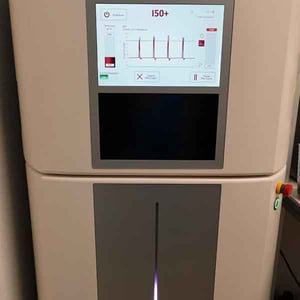 One of the most exciting advancements in 3D printing technology for coil prototyping is Digital Light Processing (DLP). This emerging technique uses a projector to shine light onto a vat of liquid resin, causing it to harden and form the desired shape. DLP technology provides high accuracy and speed, making it an excellent option for creating highly detailed and complex designs with a smooth surface finish. What makes DLP even more exciting is its potential for producing multiple objects simultaneously, making it a cost-effective option. With DLP, engineers can create intricate and customized designs for a wide range of applications.
One of the most exciting advancements in 3D printing technology for coil prototyping is Digital Light Processing (DLP). This emerging technique uses a projector to shine light onto a vat of liquid resin, causing it to harden and form the desired shape. DLP technology provides high accuracy and speed, making it an excellent option for creating highly detailed and complex designs with a smooth surface finish. What makes DLP even more exciting is its potential for producing multiple objects simultaneously, making it a cost-effective option. With DLP, engineers can create intricate and customized designs for a wide range of applications.
As 3D printing technology continues to evolve, we can expect more advanced techniques and materials to emerge, offering even greater design flexibility and customization options for electric coil prototyping.
Materials Used in 3D Printing for Coil Prototyping
When it comes to 3D printing in coil prototyping, the choice of material and layer thickness is essential. There are various material options available for 3D printing, including thermoplastics, thermosets, metals such as aluminum, steel, and titanium, and even biodegradable materials. The selection of the material will depend on the specific needs of the project, such as strength, durability, and flexibility.
In addition to material selection, the layer thickness is also critical in 3D printing for coil prototyping. The layer thickness determines the level of detail and accuracy of the printed object. A thinner layer thickness can achieve a higher level of detail, but it may also increase the printing time. On the other hand, a thicker layer thickness can reduce printing time, but it may result in a lower level of detail and accuracy. Therefore, product engineers must carefully consider the material options and layer thickness required for the bobbin of their electric coil prototype.
Plastic Materials
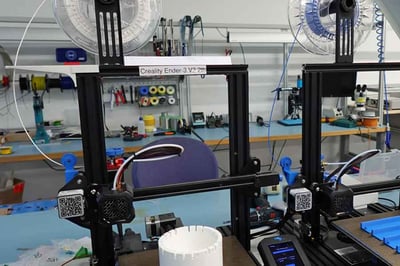 Two common material options are thermoplastics and thermosets. Thermoplastics are a popular choice due to their high strength and durability. They can be melted and reshaped multiple times without losing their properties, making them ideal for prototyping and testing. Some common thermoplastic materials used in 3D printing include ABS, PLA, PETG, and Nylon.
Two common material options are thermoplastics and thermosets. Thermoplastics are a popular choice due to their high strength and durability. They can be melted and reshaped multiple times without losing their properties, making them ideal for prototyping and testing. Some common thermoplastic materials used in 3D printing include ABS, PLA, PETG, and Nylon.
On the other hand, thermosets are materials that harden irreversibly when heated. They are known for their high heat resistance and strength, making them ideal for applications such as electrical and automotive components. Some common thermoset materials used in 3D printing include epoxy and polyurethane.
Metal Materials
Metal materials are a popular choice for 3D printing in coil prototyping due to their strength, durability, and versatility. In addition to aluminum, steel, and titanium, other metal materials such as copper and brass are also used in the industry. Copper is an excellent conductor of electricity, making it ideal for applications in the electronics industry. Brass, on the other hand, is known for its corrosion resistance and aesthetic appeal, making it a popular choice for decorative applications.
Moreover, advancements in metal 3D printing technology have led to the emergence of new metal alloys with unique properties and characteristics. For example, nickel-titanium (NiTi) shape memory alloys can change shape in response to temperature changes, making them ideal for applications in the medical industry, such as in stents and implants. Additionally, metal 3D printing can also produce intricate and complex designs that would be impossible to achieve using traditional manufacturing methods, providing designers and engineers with even greater design flexibility and customization options.
Overall, metal 3D printing offers a wide range of possibilities and applications in coil prototyping, enabling engineers to produce high-quality, customized products that meet the specific needs of their industry.
Common applications of 3D printing in coil prototyping
By leveraging 3D printing, the custom coil manufacturer KUK Group can produce customized tooling and auxiliary means that improve their production efficiency while also reducing costs. In addition, 3D printing can also be used to create insulation, which can offer better performance and reduce waste. This is because 3D printing allows for precise and complex shapes that can conform to the contours of the object being insulated, offering superior thermal and acoustic insulation. In the longer run, 3D printing technology is becoming increasingly important also for series manufacturing. For instance, it can be used to produce coil formers.
KUK Group's use of 3D printing technology is a testament to the versatility of this technology and how it can be applied to various aspects of manufacturing, from creating custom tooling to producing complex components.
Stefan Dörig, CTO KUK Group
The future of 3D printing in electric coil prototyping
The use of 3D printing technology in coil prototyping is still evolving. This section highlights what the future holds.
Increased adoption
Accessibility and low-cost 3D printers will undoubtedly play a significant role in the future of 3D printing in coil prototyping. As 3D printing technology becomes more accessible and affordable, more businesses and individuals will be able to benefit from its capabilities, leading to greater innovation and creativity in the industry. Low-cost 3D printers will enable small to medium-sized businesses and startups to enter the market, providing them with the tools and capabilities to create high-quality products without the need for expensive equipment or machinery. Moreover, increased accessibility to 3D printing technology will also lead to greater collaboration and knowledge sharing among designers and engineers, leading to more significant advancements and breakthroughs in the industry.
Advancements in material science
Advancements in material science are driving the future of 3D printing in coil prototyping. New materials with improved properties are being developed to meet the specific needs of various industries. For instance, conductive materials such as graphene and carbon nanotubes are being used to create 3D printed circuits and sensors, enabling the production of more efficient and cost-effective electronic devices. Additionally, biodegradable and sustainable materials are becoming more popular, especially in the packaging industry, where there is a growing demand for eco-friendly alternatives to traditional plastic packaging. Furthermore, advancements in material science are also leading to the development of materials with improved properties such as greater strength, flexibility, and heat resistance, making them ideal for applications in the automotive and aerospace industries. As material science continues to evolve, we can expect even more new and innovative materials to emerge, providing designers and engineers with even greater flexibility and customization options in the coil prototyping industry.







